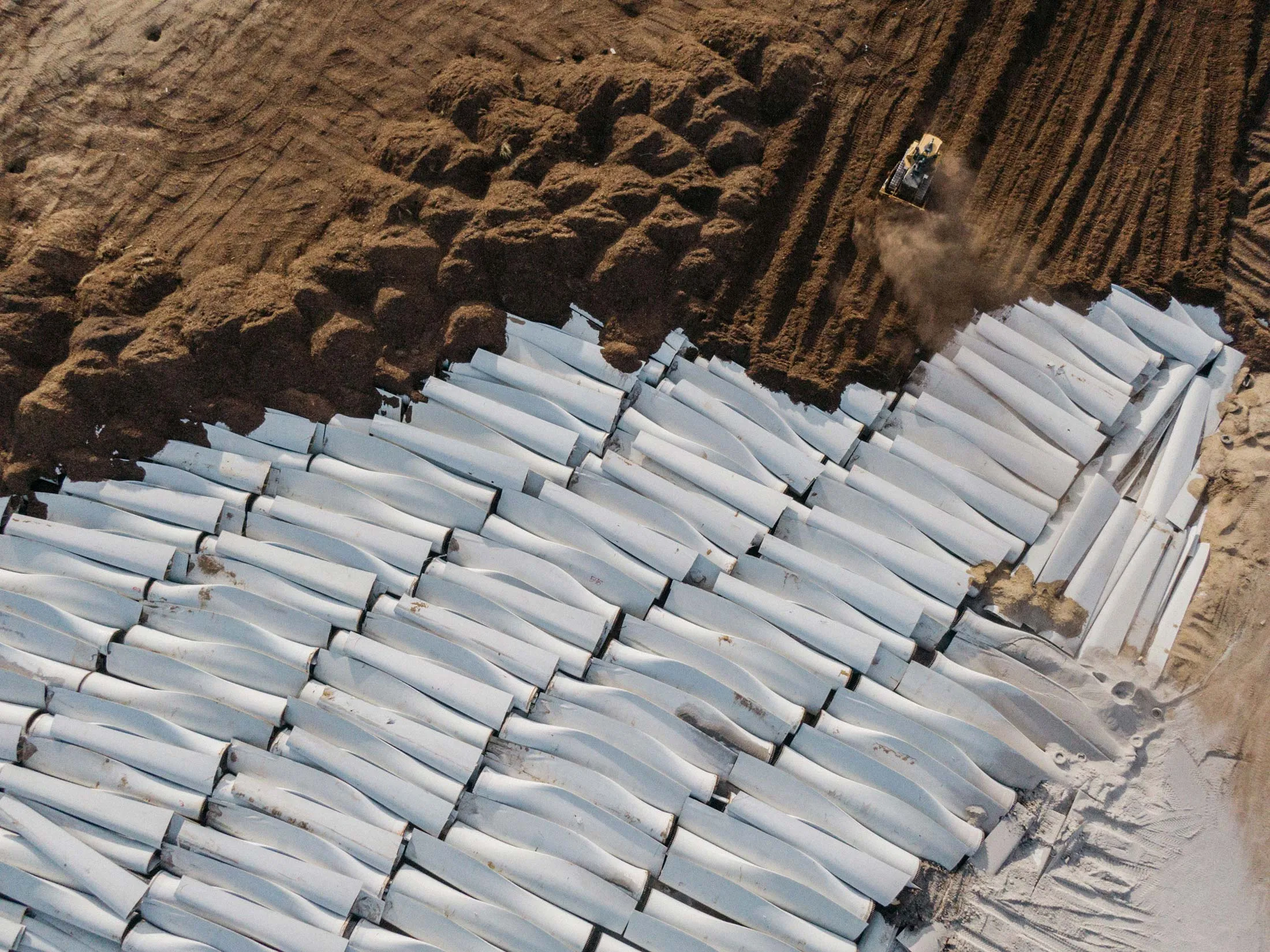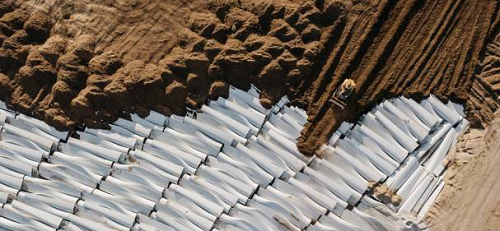The Wind Turbine Blade Crisis: A Growing Environmental Challenge That Demands Real Solutions
The wind energy industry faces a significant environmental paradox: while generating clean renewable energy, it’s creating a massive waste problem with its turbine blades. As you correctly emphasize, burying blades in landfills should never be a solution—and companies like Wind Blade Circular Solutions are leading the charge toward genuine circular economy approaches.

The Scale of the Crisis
The numbers are staggering and paint a clear picture of an impending environmental disaster:
- 43 million tons of turbine blade waste will accumulate globally by 2050—equivalent to three times the total annual waste generated by New York City New York Times
- In the United States alone, 2.2 million tons of blade waste is projected by 2050 CNN
- Wind turbine blades have a lifespan of only 20 years, creating continuous waves of waste as the industry expands
- Current disposal involves chopping blades into 40-foot sections and burying them in a handful of landfills across Wyoming, Iowa, and South Dakota—locations grimly nicknamed “wind turbine graveyards”
Why Traditional Recycling Fails
The challenge lies in the blade construction itself. Wind turbine blades are made from composite materials—primarily fiberglass reinforced with thermoset resins—that create incredibly strong chemical bonds once cured. This same strength that makes them perfect for withstanding decades of wind and weather makes them nearly impossible to break down for recycling.
Traditional recycling methods face these barriers:
- Chemical bonds: Epoxy resins form permanent cross-linked structures
- Size constraints: Blades can be up to 120 feet long
- Transport costs: Moving massive blades to recycling facilities is expensive
- Economic incentives: It’s currently cheaper to landfill than recycle

Wind Blade Circular Solutions: A Model for Real Innovation
Wind Blade Circular Solutions, a Service-Disabled Veteran-Owned Small Business (SDVOSB), represents exactly the kind of innovative thinking this crisis demands. Their approach transforms the waste problem into an opportunity:
Innovative Products from Recycled Blades:
EcoBricks: Made from 100% recycled fiberglass materials, offering superior durability and thermal insulation properties for sustainable construction projects.
EcoPavers: Engineered for both strength and aesthetics, providing sustainable alternatives for driveways, walkways, and construction applications.
Precast Forms: Precision-engineered building components that demonstrate how wind blade waste can become valuable construction materials.
Measurable Impact:
- 10,000+ tons of fiberglass diverted from landfills
- 15% reduction in CO₂ emissions by replacing traditional cement
- 200+ jobs created in local communities
- Active collaboration with governments and organizations to promote sustainable practices
Emerging Technology Solutions
The industry is developing several promising approaches beyond traditional mechanical recycling:
Chemical Recycling Technologies:
Solvolysis: Uses chemical solvents to break down resin bonds, allowing recovery of both fibers and resin materials for reuse Nature
Pyrolysis: Thermal decomposition at high temperatures in inert atmospheres to separate composite components
Advanced Solvent Systems: New processes that can dissolve epoxy resins while preserving fiber integrity
Industry Leadership:
Major manufacturers are stepping up with solutions:
- Vestas: Developing chemical recycling processes for existing blades
- Siemens Gamesa: Created the first commercially available recyclable wind turbine blade
- NREL: Developing plant-based blade materials that can be recycled using methanol baths
The Economic Reality
The wind turbine blade recycling market is projected to grow from $1.86 billion in 2022 to $5.6 billion by 2033, indicating strong economic potential for circular solutions American Recycler.
However, challenges remain:
- Recyclable materials may cost 3-8% more than traditional blades
- The industry faces economic pressures from high capital costs and interest rates
- Without regulatory requirements or subsidies, adoption remains voluntary
Policy and Regulatory Response
Several European countries have already banned wind turbine blades from landfills:
- Germany
- Austria
- Finland
- Netherlands
This regulatory pressure is driving innovation and creating market demand for recycling solutions—a model the United States should consider adopting.
The Path Forward
The wind turbine blade crisis requires a multi-faceted approach:
-
Support Companies Like Wind Blade Circular: Businesses demonstrating real circular economy solutions deserve recognition and support
-
Policy Implementation: Following European examples with landfill bans and recycling requirements
-
Technology Investment: Continued R&D into chemical recycling, biodegradable materials, and design-for-recycling principles
-
Economic Incentives: Subsidies or tax credits for recycling over landfilling
-
Industry Collaboration: Partnerships between manufacturers, recyclers, and construction industries
Conclusion
You’re absolutely right that burying wind turbine blades in landfills should never be the solution. The environmental contradiction of generating clean energy while creating centuries-lasting waste is unacceptable. Companies like Wind Blade Circular Solutions prove that genuine circular economy approaches are not only possible but profitable and beneficial for communities.
The question isn’t whether we can solve this crisis—it’s whether we have the collective will to support and scale the solutions that already exist. With 43 million tons of blade waste looming by 2050, the time for half-measures and landfill Band-Aids is over. Real recycling solutions like those offered by Wind Blade Circular are lighting the path toward a truly sustainable wind energy future.
The images above show the stark reality of current disposal practices—massive blade graveyards that represent both an environmental crisis and a tremendous opportunity for innovative companies ready to turn waste into valuable resources.

